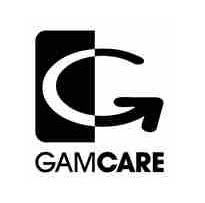Micro-Stakes Pot-limit Omaha tables can be very profitable compared to the cash invested. They are a great place for the recreational player to relax and the aspiring pro to learn the tricks of the trade. This article looks at the Micro-stakes PLO poker games online and suggests strategy tips to beat them.
We will start with a definition of micro-stakes tables – as the smaller stakes at some sites are markedly different to those on others. Next we will cover the characteristics of the players you will find at the Micro-stakes Omaha poker tables.
Finally we list the adjustments required to walk away with a healthy profit!
Important Note: While this article refers to games with 5c / 10c blinds and below, it is important to note that some ‘soft’ sites have crazy games far above this level. Make sure you know where to find the most profitable PLO games – it can and will make a big difference to your bankroll. See our Omaha Poker Cash games section for more.
Let us be honest, the micro-stakes Omaha games are populated by some truly terrible opponents. Some are just playing for fun and do not care about the money, others simply do not understand the most basic points of Omaha poker strategy… the list below covers many of the characteristics of the players you will find in micro-stakes PLO games:
- Playing Too Many Hands: Any high cards look good to a micro-stakes player, as do any suited or even vaguely connected cards… in fact up to 80% of starting hand combinations can have ‘something about them’ which makes a call (at least) seem in order.
- Limping and Limping Behind: No where else but the micro-limits will you see flops 8-handed without a single raise before the community cards hit!
- Calling Too Many Raises: As above, any hand can hit a flop – and an awful lot of hands look good even when there has been a pot-sized raise ahead. We will give the micro-stakes players some credit here, this could cut down their range to a mere 50% of all starting hands.
- Over-Valuing High Pairs: A Pair of Jacks? Premium! Never mind the fact that this hand has no back-up, it is worthy of a raise, a 3-bet and a 4-bet all-in.
- Chasing Non-Nut Draws: Of course the micro-players chase the ‘idiot end’ of a straight on a 1-suit board, you could be bluffing (or maybe hold a pair of jacks!)
No Adjustments For Position: Not just in pre-flop hand selection, but either not noticing or not caring about getting caught in a raising ‘sandwich’. After all its only 5 cents more, oops 15 cents more, oops 45 cents more….
Ok, we are sure that you get the picture by now. The micro-stakes Omaha Poker players are loose and will call down to the river with virtually any hand you can imagine.
So what are the adjustments we need to make in order to profit from these tables. How do we take advantage of these tendencies to make our poker bankrolls grow? The answer, as with many forms of poker is to play the opposite strategy to your opponents.
This need not necessarily involve tightening up too much before the flop, which is more dependant on the number of pre-flop raises at your table than anything else. Speculative hands have a role – from good position and with some nut potential.
Playing tight may be optimal – this includes after the flop. If you raise a strong hand and completely miss the flop (or have a vulnerable hand) then it is usually not worth semi-bluffing your way out of trouble. Simply folding and waiting for the times you do hit will be more profitable over time.
Conversely, value betting your strong hands is a very powerful weapon. Since your opponents are unlikely to fold you will be paid-off very well those times you make a decent holding. The range of hands that you value bet with can also go down in value compared with the higher stakes tables – again your opponents will be calling you with such weak hands that you do not need as strong a holding yourself.
Beating the micro-stakes PLO poker games online is a great way to gain experience in Omaha poker. The basis of the game of poker is that successful player adjust to take advantage of their opponents weaknesses. It is no good claiming these games are not beatable as ‘nobody folds’ – the actual challenge is to find the right combination of adjustments to make money over time!




